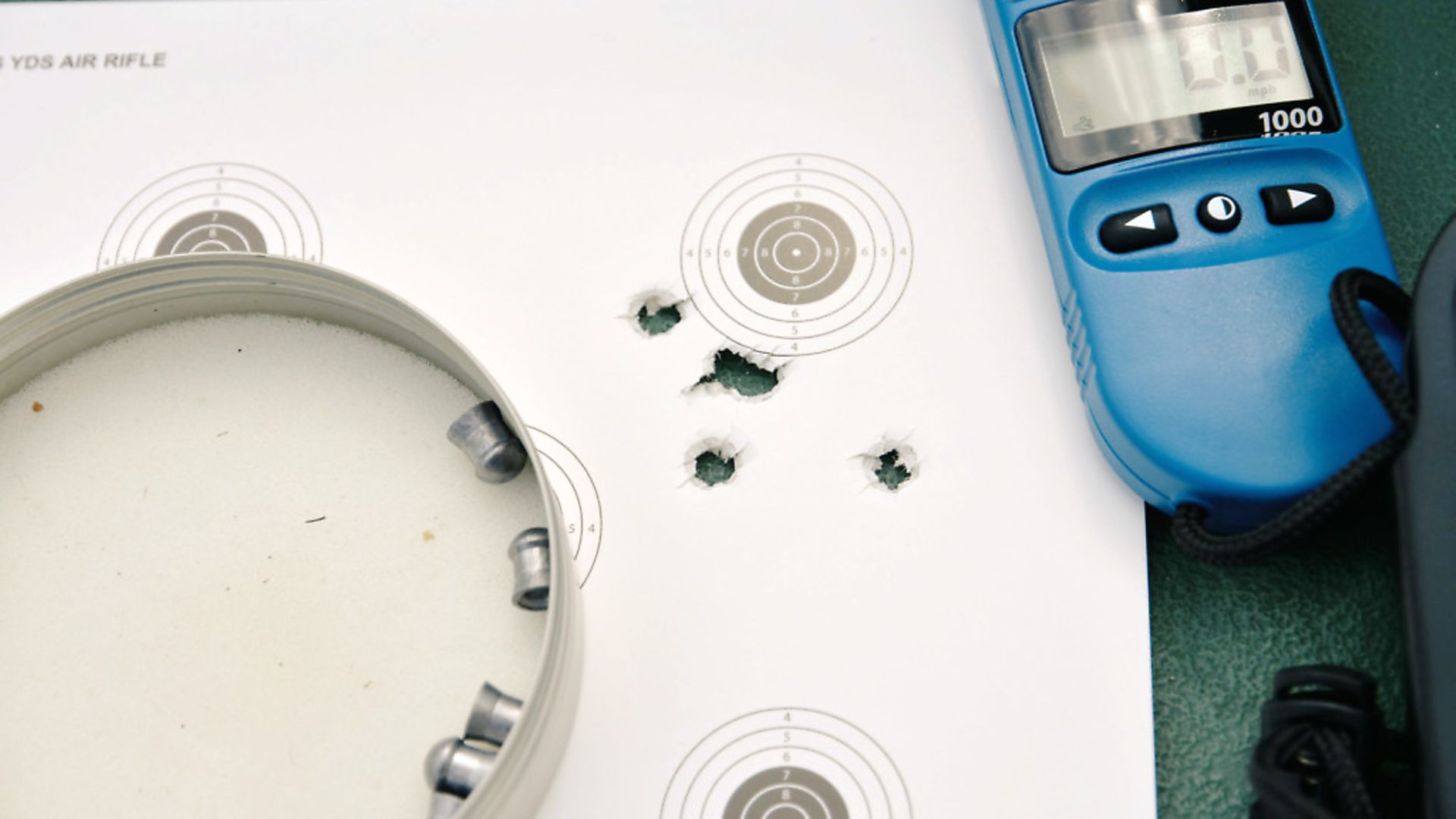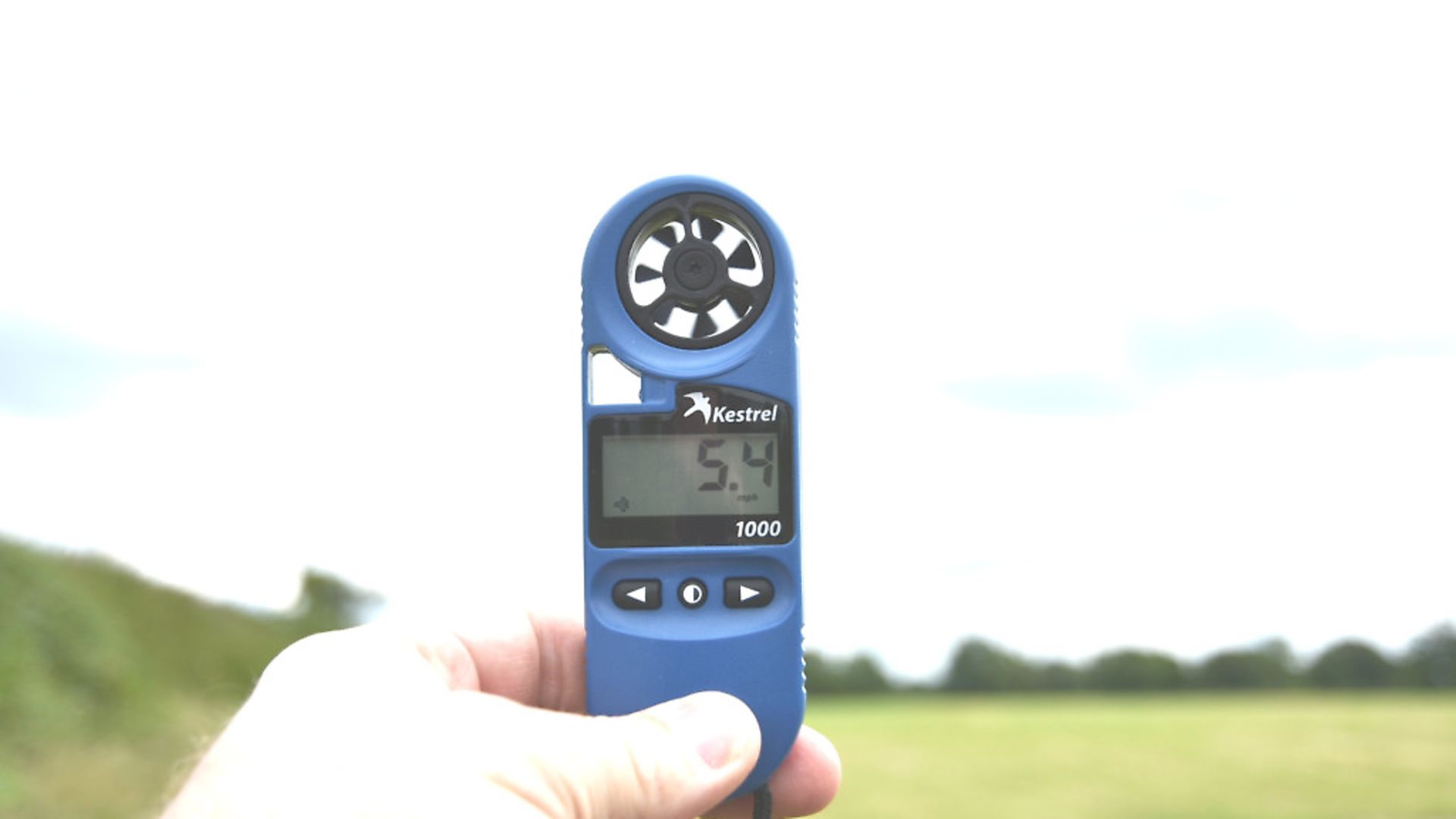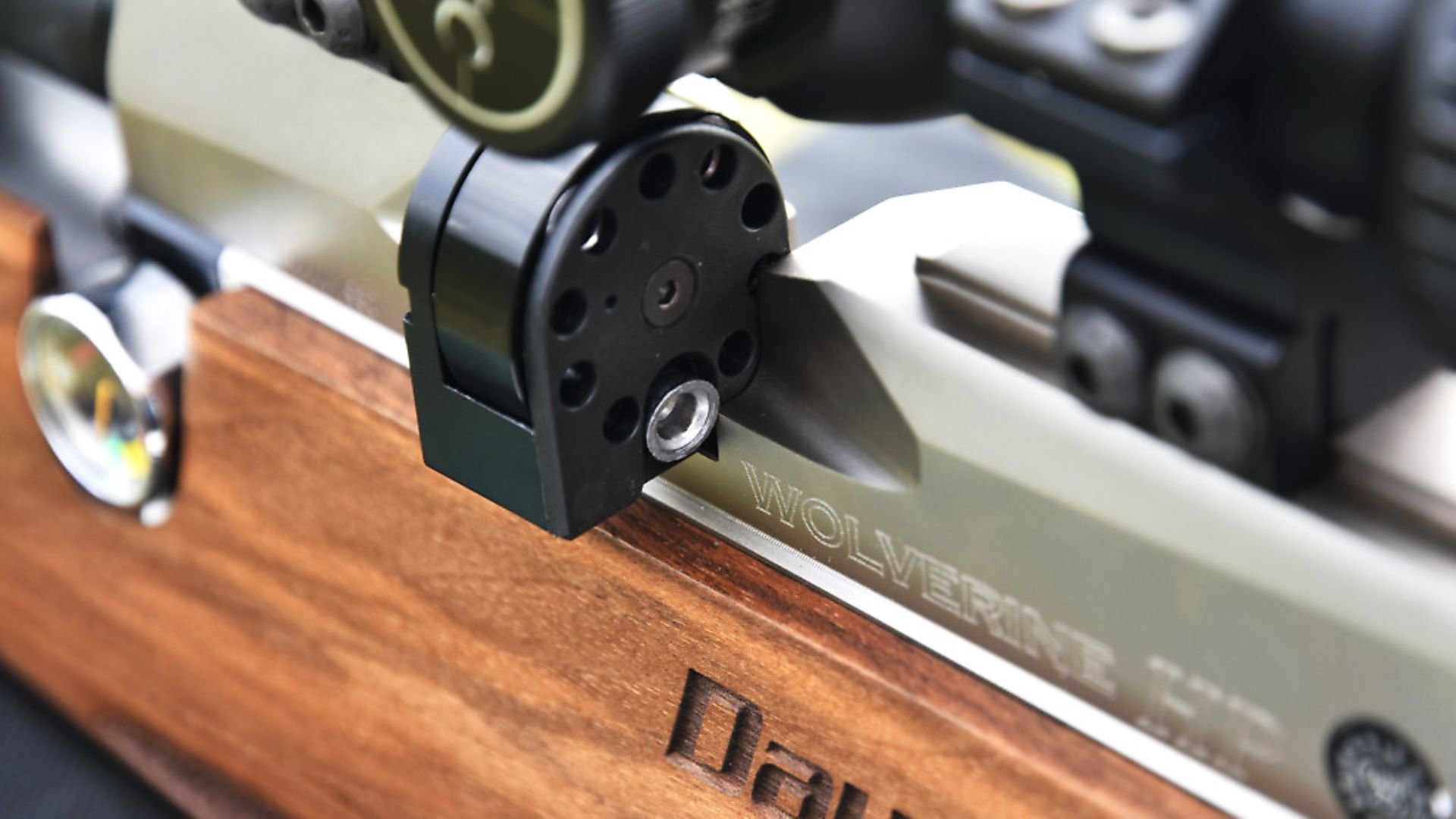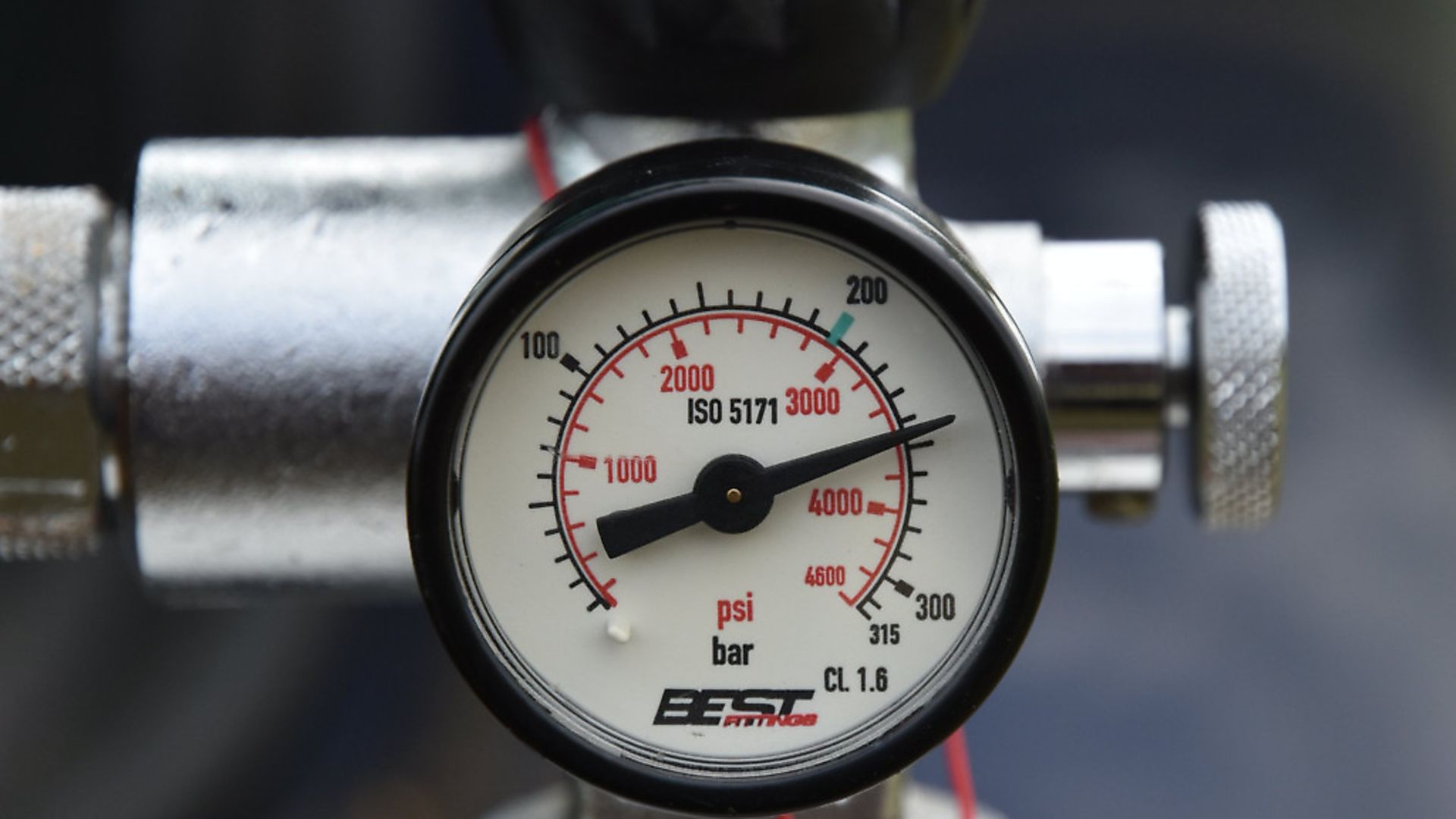The editor concludes his investigation of ultra-high-power airguns
 credit: Archant
credit: Archant
Last month, I set about trying to find out if a full-length rifle would be better to shoot at extreme high power than a bullpup. You see, I’d shot some 80ft.lbs. .25 and .30 calibre bullpups and found them tricky little beasts, being hold-sensitive like a spring piston gun. I reasoned that a long rifle might flip less than the see-saw movement that bullpups exhibit.
Daystate offered their new Wolverine 2 in .303 calibre, which gives over 100 ft.lbs. of muzzle energy: a very stern test of any airgun. After some time getting used to it and setting a base zero, I settled down to feel the recoil characteristics. There’s no question that this rifle, despite the long barrel and all-metal moderator, flips on firing. This can easily be seen as you watch other people firing it. You can also feel the recoil at your shoulder, but only just. It’s a nudge more than a push.
My next task was to take the target cards back to 50 yards and work on some groups. Because the rifle is so powerful, I had to choose my location on the farm carefully to ensure a back stop that could survive shot after shot at massive power, and absorb the 50 grain chunks of lead for a sustained period. In front of a rising bank, I stacked old 8” logs that I felt sure would trap the pellets, and began shooting.
 credit: Archant
credit: Archant
How it’s done
Shooting from a portable bench with substantial bags for support, I soon rezeroed for distance and set about getting representative groups, and this was where the challenge began. I’d get some nice little groups and then suddenly I’d get a flier. My shooting partner was finding the same thing, and I felt that it was something in my technique rather than the rifle that was to blame, so I worked through every element of my technique, one step at a time.
We wondered if the rest bags might be to blame, so we swapped them around in various ways, but that wasn’t the answer. Russ is taller then me and decided to stack one bag on top of another to raise the fore end so he’d need to bend his back less. Suddenly, he got some really nice groups and we began to look at what was different. It was then he asked if it was OK to support the rifle with its weight on the carbon-fibre buddy bottle. I didn’t know the answer, but felt eliminating that was worth a try.
I arranged the bags so that only the stock was in contact and – voila! No more fliers...okay, far fewer fliers then. A quick phone call to Daystate confirmed that they’d had this experience too, so I knew I was heading the right way. Three shots touching at 50 yards is serious accuracy and it’s what high-power guns should be about.
 credit: Archant
credit: Archant
As I was packing up for the day, I put all the gear in the car, locked it, set about clearing up, and as I picked up the last log, it simply fell in two. The Wolverine had cut it in half! Now, that’s what you call power!
Stretching the distance
What I wanted to do next was to go out to 75 yards from a good, solid rest that had enough room to position the support bags correctly, based on what we’d learned. Of course, I’d need low wind conditions too, because no matter how powerful an airgun is, the wind is always a factor in accurate shooting. A steady 5mph breeze would blow it 3” off course, according to Chairgun, but I wanted to see for myself how strong the effect would be, so I packed my anemometer to get some data as I shot.
After setting up, I watched my hand-held anemometer and that told me the wind was varying from 3 to 7mph, a light breeze to us, but to our pellet flying at close to the speed of sound, the air is as thick as treacle and any small change in wind speed makes a big difference. Chairgun told me that I should expect 4½” of drop from the 50-yard zero I set, and that proved impressively close in the real world. The wind was quartering from behind, mostly pushing the group left, but not all that much.
 credit: Archant
credit: Archant
Accuracy
Group sizes varied from 1½” to 2½” depending on how many fliers the wind caused. There was never a moment when the wind dropped long enough to let me get five shots off without a significant effect. My self-imposed, long-range accuracy limit is five shots that you could cover with a one-pound coin, so I’d need to come back to 50 yards to achieve that standard, even with a gun of this class and power. Sure, this rifle will still deliver over 60ft.lbs. at 75 yards, but badly placed shots mean wounded and lost quarry, something I will never accept when it could be avoided.
So what have I learned? Just as I’d hoped, the long-gun format handled the high-power output much better than the bullpups I tried. This is just a matter of physics and nothing to do with fashion or taste. Next, I needed to answer a question: do I want one? Answer, no. Sure, it was great fun to shoot and my friends who had a go all loved it as well, but none of us has put the cash down to buy one. There are places around the world where they have quarry animals that suit this rifle, but we don’t. It’s a lot of gun for a rabbit, but not enough for a fox, so it sits in no man’s land here in Blighty. I’m grateful to Daystate for allowing me to enjoy such a remarkable rifle that shows just how far the contemporary airgun can be taken, but for all that, my humble .22 pellet flying at 900 fps from my Huntsman Regal XL is all I need.
Specification
Manufacturer: Daystate
Web: www.daystate.com
Tel: 01785 859122
Type: Wolverine 2 Hi-Lite HP
Action: Magazine-fed, bolt-action
Length: 44”
Weight: 8.4lbs (3.4kg)
Trigger: Two-stage adjustable
Fill pressure: 250bar
Price: £1357.00
Silencer: £134.00
Magazine: £55.00
Pellets: (tin of 150) £13.99